Leaderboard
Popular Content
Showing content with the highest reputation on 10/28/2019 in all areas
-
I think the purpose of the video is to point out that the old adage of "maintaining flying airspeed" is not drilled into pilots. And I think the reason for the marking on the airspeed indicator is to get the pilot to quickly to the correct speed. Anyone who has had an engine event close to the ground will tell you how hard it is to think clearly when you are initially dealing with the "oh crap" reaction. Having a visual aid and not remembering the number is a way to do that.4 points
-
Drive 40 minutes to airport and then fly 15 minutes to another airport for free doughnuts. Oh and passing directly in front of 4 doughnut shops to get to the airport.3 points
-
I think it should be mandatory on the Mooney FRs to go up high. set up take off configuration full power nose high and have the power pulled so people learn to push down. This should be done 3 or 4 times. Muscle memory is the key. Power off Push down. Power off Push down. Hear the stall horn push down Hear the stall horn push down.3 points
-
Congrats to all fellow new Mooney owners. I want to chime in since I can relate to their stories. I closed on a 1995 Mooney M20J MSE by mid August. Took the airplane (then based at a grass strip in Northern Germany) and did two cycles in the pattern with the (now former) owner. Landings seemed surprisingly easy to me, so I simply flew her to my home base, a 600m asphalt strip in central Germany. No insurance requirement of transition training, and after 23 hours I have to say, while a little training would certainly not have hurt, I am not missing anything. (I had about 750 hours in Cessnas and Pipers before, not a lot, but something to build on). The 23 hours in the Mooney were spent in several day trips and a brief vacation to Croatia. Before, I had a GREAT respect landing the airplane - and it was all unjustified. The M20J is easy to land, in fact, never before have I made made smoother landings with such regularity. The secret is in having a graphics with typical W&B scenarios and fuel states, and on the side of that (along the weight axis) the appropriate Vrefs. I am attaching that graphics here from the back of my checklist. Also, I am tending towards the 1,2 Vso "short field Vref" instead of the more common 1,3 Vso because most strips I am using are indeed short. My results have been consistent smooth landings with the stall horn audible just before touchdown and right on the aiming point. And generally speaking: the M20J is a joy to fly VFR and IFR. A stable and fast travelling machine. The airframe has about 6000 hours, and the engine 8000 (1600 since overhaul). But it is a beauty, interior was done 15 years ago (and well), and paintjob is 10 years old (and beautiful). I have finewire spark plugs, and the engine is running LOP just fine, to my knowledge without any adjustments in the injection system. In cruise at 8000 or so, I leave the throttle fully open and tune the mixture to the maximum power availble up to 75% (another table helps here, I am attaching that too). Cool CHTs, little oil usage, what else could I dream of? One extremely small fuel leak stains the paint and needs fixing but not in a hurry. Next week I am going to deliver the airplane to an avionics shop, replacing the GNS430W with an IFD540 and a couple other (minor) changes in the panel. So, another happy camper here.3 points
-
Wow, sorry to hear the problem returned soon after we last flew without issue. It has to be an electrical issue and more likely to be isolated to the circuits used for retraction instead of extension. Unfortunately the Maintenance manual isn't that helpful given the symptoms, so one really needs to pull out the schematic for your serial number and trace through the schematic for when the retraction circuit is energized or with the gear up switch in position starting with the airspeed pressure switch and work forward from there. But the time to do it is right after the gear fails to retract. But given the solendoids were just replaced, unless one has failed (infant mortality), one of the big suspects is the airspeed pressure switch. But the big data point against this is that we never saw the red bypass light illuminate nor did pressing the bypass button enable the gear retraction circuit to energize (at least not when we flew together) suggesting something downstream is at fault. But one really needs to look at the schematic in detail to trace the circuit to be certain - hopefully when it still won't retract. If all of sudden it works fine on jacks its going to be tough one to figure out but sometimes wiggling wires and connectors reveals a bad connection. Given the circumstances I'd probably want to get it up to LASAR sooner than later. But given the distance required to fly with the gear down, it makes trying out the other nearby MSC, Foothills at Upland, very appealing since they should also be very familiar with the gear electrics as well. Hope you get resolution soon!3 points
-
Am I the only one that does not think this video is the “epiphany” that the CFI is claiming? Maneuvering speed (VA ) has a definition. GA pilots don’t “think” it’s a maximum...it is a maximum. I’m not going to define it here because it’s easy to find and we all were taught about maneuvering speed in PPL training. It’s based on design load, not flying in the pattern. If one wants to have a minimum pattern speed, by all means, but it has nothing to do with maneuvering speed. Furthermore, flying delta wing, transport category aircraft is a completely different type of flying. Transport category aircraft have speed brakes, spoilers, lift dump devices, thrust reversers, etc. etc. they are not maneuverable, they are no closer to GA flying than an ocean liner is to a small pleasure craft. I guess I’m a curmudgeon or a dinosaur or whatever, but I don’t think stall/recovery training is killing pilots. Complacency and or sensory overload kills pilots. If you don’t know you’re approaching critical AOA, you don’t know you’re approaching critical AOA. If you don’t know you’re slow, you don’t know you’re slow...I don’t think having an extra piece of tape on the ASI is going to help you if you’re so distracted you’ve lost situational awareness. Has anyone here ever actually been surprised by the stall when practicing stall/recovery? I have not. The horn gives a lot of notice, the plane can be flown with the horn blaring while holding altitude and turning, the plane will buffet gently before breaking giving another cue of what’s in store. What does surprise people? A secondary stall during an over aggressive recovery. Why is it surprising? Because it’s accelerated, it’s almost immediate and it’s caused by an aggressive control input that blows right through any usable AOA to critical AOA and an aggressive secondary break. I don’t think the stall/spin accident scenario is some daft pilot getting slow in the pattern. It’s likely an accelerated event caused by an aggressive control input that gives little to no warning as the aircraft departs controlled flight with stall horn coming to the party to tell you what you already know... I think familiarizing yourself with your airplane’s stall characteristics and all of the cues associated with stall so that a stall can be avoided is a far better strategy than trying to redefine maneuvering speed or putting a little yellow strip of tape on your ASI.3 points
-
I have found that carrying a spare part in your plane insures that you will never need to use it.3 points
-
As you might have heard, the McRib is back at McD's. Unfortunately someone in Minnesota must have upset the folks at Mickey D's Corporate because they are absent from every store in Minnesota, except Worthington, MN. So I just got back from a 1 hr flight from Minneapolis to Worthington in SW Minnesota just to have a McRib. I guess its another version of the $100 hamburger. What crazy excuses have the rest of you come up with to go flying.2 points
-
I don't understand the push-back on this idea. Should you know your speeds? Sure! Why do we even have different colors marked on the ASI? Just remove the white arc, the green arc, the yellow, and even little red line, after all, we should all know those speeds, right? Should we know what it feels like as a stall approaches and push forward to break it? If we hear the stall horn should we instinctively push forward? Absolutely! Yes, if you are staring at the ASI and don't understand that you need to push, you have some other issues... The idea (at least my understanding from the video) is to remain above stall speed and not approach the stall. Not trying to argue with anyone and their experience flying/instructing (I think just about everyone on the board here has more experience than I do), but there is an ASI inside the plane and in an engine out situation I would make the argument that in addition to looking outside the plane you should be glancing at that ASI to make sure you are maintaining your speed. When I was going through my PPL training and we were practicing engine loss on departure and returning dead stick I can still hear my CFI in my ear repeating over and over "watch your bank, keep the nose down, watch your speed." If some pilots don't want to add a small piece of tape to the ASI to aid in a quick glance and noticing if the needle is above or below that line then they don't need to. If you haven't watched the entire video I would say don't disparage the idea so quickly. If you have watched the entire video and still think it's a silly idea then don't put a piece of tape on your ASI, but I think discouraging others from doing so does not do anything to improve safety.2 points
-
For me it goes like this.... First, it must be on the left side. It is the MOST used instrument in my panel, and second place isn't close. Second, it needs to be in Landscape mode. At least with the 6 cylinder version, not all data is simultaneously deployed in Portrait mode, so Landscape is preferred for me. If there's no room for Landscape mode on the left side, refer to the first rule.2 points
-
You do realize you are talking to a bunch of CB's... The price of a piece of tape vs AOA?2 points
-
Id say a gps is far nicer than a second nav. Especially with the MON system beginning, LPV and LP approaches are going to be way more useful than ILS approaches since so many more airports are going to have them. In my panel upgrade, im doing 1 source of gps, 1 nav source, 2 comms, and a backup gps in a g3x. I dont see the need for a second nav.2 points
-
Seems perfectly reasonable. Free doughnuts are never ridiculous!2 points
-
Mike, Thanks for doing what you do and I know it must take an emotional toll on you.2 points
-
Interesting video that may help keep pilots safer. Stall prevention is key. But, when an imminent stall happens low to the ground, or worse yet on takeoff with engine loss, we have to be preprogrammed to immediately lower the nose as discussed in the video- although I don’t believe we need to really go into negative Gs. Many pilots who have successfully dealt with engine loss shortly after takeoff will tell you that the immediate pitch down site picture staring at the ground can be alarming, but necessary when close to stall speed. This is why I like a little speed buffer at and immediately after rotation. In piston twins, it’s at least Vmc + 5 knots for rotation because speed decays quickly with engine loss on takeoff. Briefing every takeoff with the expectation of an engine failure is a great idea. Even better is to have a preset plan for what you’re going to do with an engine failure at various altitudes and positions on takeoff and climb out. Glider pilots are immediately taught to call out 200 or 300 feet AGL as a decision point for turning back or landing straight ahead in the event of a rope break or towplane engine failure. I Know the engine out landing options at the ends of each runway at familiar local airports, but I could definitely do a better job at studying my options at unfamiliar airports some of which require choosing the best of lousy choices for an off field landing. Flying in the Rockies, I try to frequently play the what if I lost an engine here? where would I go? game. Being ready for the unexpected may make all the difference some day.2 points
-
Transition training time prescribed by an insurance carrier is actuarial based along with a bit of astrology influence and weighted with your current reported times. The rubber meets the road with your absorption of new systems and procedures, stick and rudder adeptness, and competency in all phases of flight you are certificated to make in the new to you plane. Personally, I will sign a person off once I see they have a mastery of the plane and transition syllabus to the point I would let my most prized treasure, my wife, fly with them. Most of the time this occurs well within the insurance stipulated times and we spend the balance of the time required honing new skills. New Factory Ultra transition training encompasses 3 to 4 days with a FITS training program and heavy ground instruction.2 points
-
Thanks, Just finishing up "the letter" to Clinton Power's wife and read this If anyone knows for sure who the deceased pilot was, or possibly contact info for a spouse, please let me know. Maybe Phil Corman has some "data" from the Mooney Flyer or the West coast Mooney club2 points
-
Hi Ricky and sorry for being late to the party. I have experience with both Freeway at W00 and AirMods in NJ. I recommend both. Freeway has the smaller runway and is closer to you and thus you can drive over to check up on any extended repairs. We also have a good list of local Mooney owners who would be happy to help ferry you back and forth from JYO to NJ or MD. I’ll PM you my contact info. I’m over at JYO often as I also fly charters for OpenAir. Welcome to Mooney ownership and thank you for bringing another M20K to the Greater Washington DC Area. I base my Mooney Missile at GAI. -Seth2 points
-
I see it more as a tool during an emergency situation, flying clean, and staying above stall speed and not getting slow trying to stretch it out. For the pattern I don't think it does anything for me, I fly the same 100/90/80 that you do and am so focused on the speeds at each point in the pattern I don't think I'm going to get slow.2 points
-
I carry tubes for main and nose for the same reason.. I blew a tire at an unattended airport on a Sunday afternoon a few summers ago. There was a derelict 201 on the field that hadn’t moved in ages. After 3 phone calls I reached its care taker and was given permission to transplant a wheel. We were across the state line in West “by god” Virginia so leaving the poor 201 on blocks seems apropos. I was on my way in a 45 mins. I flew back a week later and reinstalled the borrowed tire. Nice IA at that airport. We had a few mutual friends and he gave me permission to use his jack over the phone. my F The donor 201.2 points
-
I could tell you all the things I’ve done to avoid paying airplane taxes, but we are all cool right now and I don’t want to poke the bear.2 points
-
2 points
-
Boy did this bring back memories. I remember my flight instructor wore a Brooks Brothers suit to my first lesson. I seem to recall I wore a navy blue blazer and gray flannel slacks. Boy were those the days. It was swell.2 points
-
Headsets first... Intercoms were add-on portable devices in the mid to late 90s... What’s missing is all the cigarettes... -a-2 points
-
2 points
-
2 points
-
Arizona told me I need to contact them to let them know how long I’ll be in the state next time I’m there. It’s a requirement of their tax law for anyone flying into the state. I’ll see if I can find the email. I started emailing the guy my entire day’s itinerary from waking up, brushing my teeth, to going to bed. He’s said it’s unnecessarily but I told him I wanted to make sure I didn’t miss a pedestrian tax or a solar exposure fee.2 points
-
I like mine in landscape mode. These discussions are like which iPad app you like for flying. Try them all and pick the one that feels right for you. Sent from my iPhone using Tapatalk Pro2 points
-
Wife told me to take the boys to the Little Rock zoo, which was about 40 min drive into the city. We flew an hour to the Memphis zoo instead. First she was mad, then thought I was brilliant and then angry she didn’t get to go.2 points
-
2 points
-
For those with iPads and/or Macs (and there is probably a PC method, but I'm just not aware of it). I (like everyone) try to capture the views that we see from the front left seat, but am frequently disappointed how the camera didn't auto correct like my eyes/brain combination for haze and blue tints. Here is a link of a procedure to remove the blue haze and to get the photo to real colors. http://www.photoble.com/photoshop-tutorials/getting-rid-of-haze-in-photos/ And here is a before and after...1 point
-
In mid September we (wife and I) closed on a 1995 M20J MSE. Since then, it has been in annual and we just came out the other side of that experience only moderately lighter in the wallet. We got the pre-buy and subsequent annual done by Sean at C & W Aero at KCDW. It was a good learning experience but I'm glad it's over. I did the flight from KCDW to KPOU with my CFI yesterday and it was both fun and challenging. On the flight we went through airwork maneuvers: steeps, stalls, slows, constant airspeed descents, AP familiarization, manual gear extension, speedbrake use, and managing energy approaching the destination. As a low timer with DA20 and C172 experience I was amazed how different certain maneuvers felt. For example, steep turns go nose low much more in the Mooney than I am used to. Also, the general cruise attitude of the plane looks different. My CFI was pointing out a tendency to fly more nose-high than I should. I was absolutely amazed at how docile the J felt in stalls (power on and off). There wasn't any strong wing dropping tendency or even much buffeting. I thought about asking to go through accelerated stalls, but maybe another time. I was feeling a little saturated. I thought I had hit the approach numbers pretty good and was 75 knots over the threshold with nearly full nose up trim yet still bounced once and then settled nicely for a smooth but slightly yawing landing. CFI reminded me to avoid the temptation to nose down after bounce and just wait for it to settle as you continue to hold it off the runway. It'll be better next time! It is a joy to fly. I'm excited about getting through the insurance probation period and being free to continue to practice on my own. Thank you MSers for all your words and experience. We definitely made the right choice of aircraft. Photo is me, my father-in-law (retired A&P), and my wife after I returned with my CFI.1 point
-
1 point
-
Well I finally got it completed (almost) I still ha e to make the ramp/tire stop. Here are photos of it. I made where it should easily handle 1000 lbs according to the bearing I bought (we will see if that is true. For. Ow I can tell you it moves and swivels easily1 point
-
I couldn't agree more about the "oh crap" reaction. I had an event a few weeks ago where I had to abruptly pull power to idle 3 minutes after takeoff, and it was 100% my glider rope-break training that got me home safe. There's really no time to make any decisions, just time to execute the decisions you've already made. A bit of tape on the ASI is a healthy reminder that you decided long ago to keep the speed up even if that means landing short.1 point
-
I'm wondering the same thing. I flew my first 300 hours without a headset and I developed tinnitus about 7 years ago which is unbearable at times. I walk around 24 hour a day with loud hissing emanating from somewhere in my head.1 point
-
I learned to fly in 1989/90. Nobody wore headsets. I was stationed in Korea 1990/91. When I started instrument training in 1992, my instructor told me I either had to buy a headset or find a different flight school. So my answer to the OP is sometime in 1991.1 point
-
It was an iPhone XS (not the new three lens one) probably on the 2X lens.1 point
-
X, Cable and serial device for JPI download are available on the JPI website... They can also be assembled from internet parts if you have a deep technical desire... Best regards, -a-1 point
-
MooneySpeed: I went with EDM900 instead of EIS for a few reasons: 1. I like to always be able to see the engine temps, and with the new instruments seeing all of them numerically at once, all the time, was a thing I wanted 2. It did not appear that EIS could do that 100% of the time...you have to open the engine page to see them 3. therefore with EIS, to get what I wanted, I'd need an additional 7" G3X. Now, I liked that idea, but it would have cost another $3500 (more than EDM). there was a rumor this summer before Oshkosh that a dual G3x installation might be relieved of the requirment for a G5 backup, and if that had happened I'd have switched--eliminate G5 and EDM and install 7"G3X instead, with EIS. Although I'm not completely certain it would have fit!1 point
-
I'm not sure what age group you identify with, and perhaps you already know, but /S is a symbol to imply sarcasim on many internet spaces. It's sometimes needed as the senders intent/text does not read the same when the receiver reads it. I hope I didn't offend you, I was only making a lighthearted joke among friends on mooneyspace. Whichever side of the debate you fall on is fine with me I have no skin in the game, and have learned lots from the questions you've asked. For what it's worth, I don't know you but I would lend you a screw and a hand if you broke down in my area.1 point
-
That sounds about right. For now, 75 KIAS is fine, and you'll get a lot of practice time in the flare, but eventually you'll want to dial it back a few knots like everyone else suggests. My CFI describes the flare as a maneuver where you're trying to not let the plane land. I think he would describe what happened to you as accidentally letting the wheels touch during the middle of the flare...1 point
-
Google mooneyspace 406 ELT for many previous discussions on this. I personally went with the ACK 406. Both that and the Artex for ~$529 support an optional GPS interface from your panel mounted GPS which most of us find essential. I would check battery replacement cost and shipping charges (some require hazardous shipping fees). Airtex is made by ACR which is a big plus but they were a little late to the market. ACK is a few $ cheaper. Install is pretty similar with all of these, expect you'll probably have to pull a new wires for the cockpit switch anyway (usually shielded) as well as for your GPS position interface. Anyway I wouldn't be upset about them pulling support for these. You're overdue anyway. Plus if you carry precious cargo away from urban airspace like many of us, you really want the better insurance anyway. Sent from my iPhone using Tapatalk1 point
-
I didn't like the curved windows at first. but I saw a photo of my aircraft in flight, and saw how the curved windows reflected the curved lines in back. it really is quite lovely. Now I like it just fine.1 point
-
1 point
-
1 point
-
If you watch the whole video, they have an add-on which allows the nose gear to swivel.....something for everyone, at a price.1 point
-
Yes, they make tugs that lift the wheel and do not turn it, as it is towed. However, they are expensive.1 point










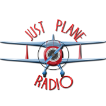




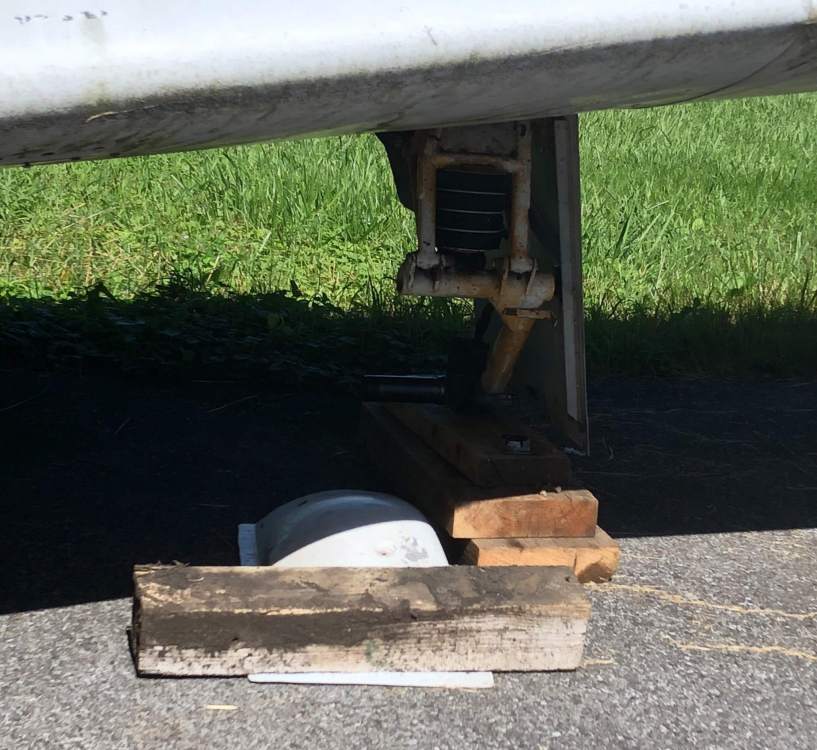

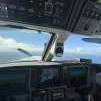
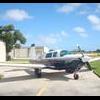

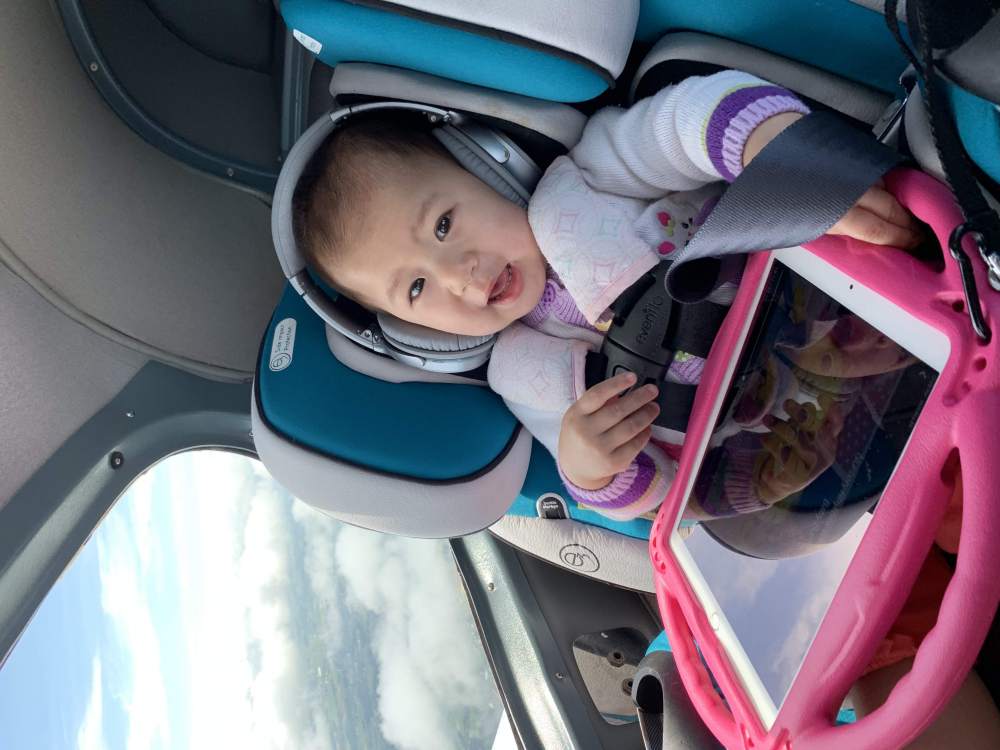

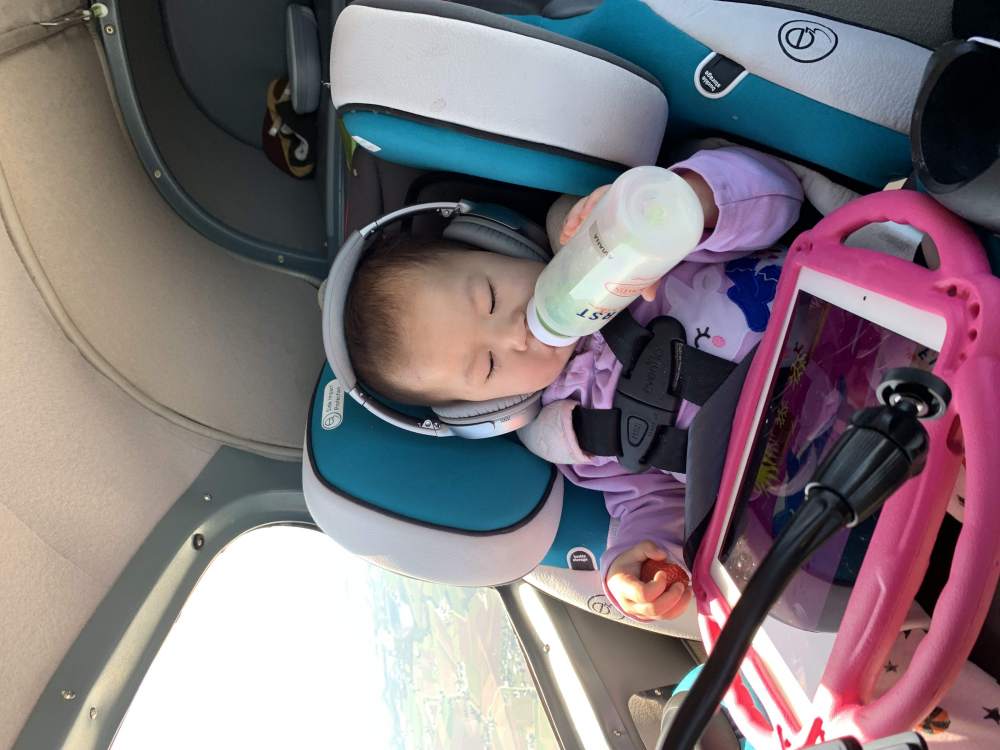
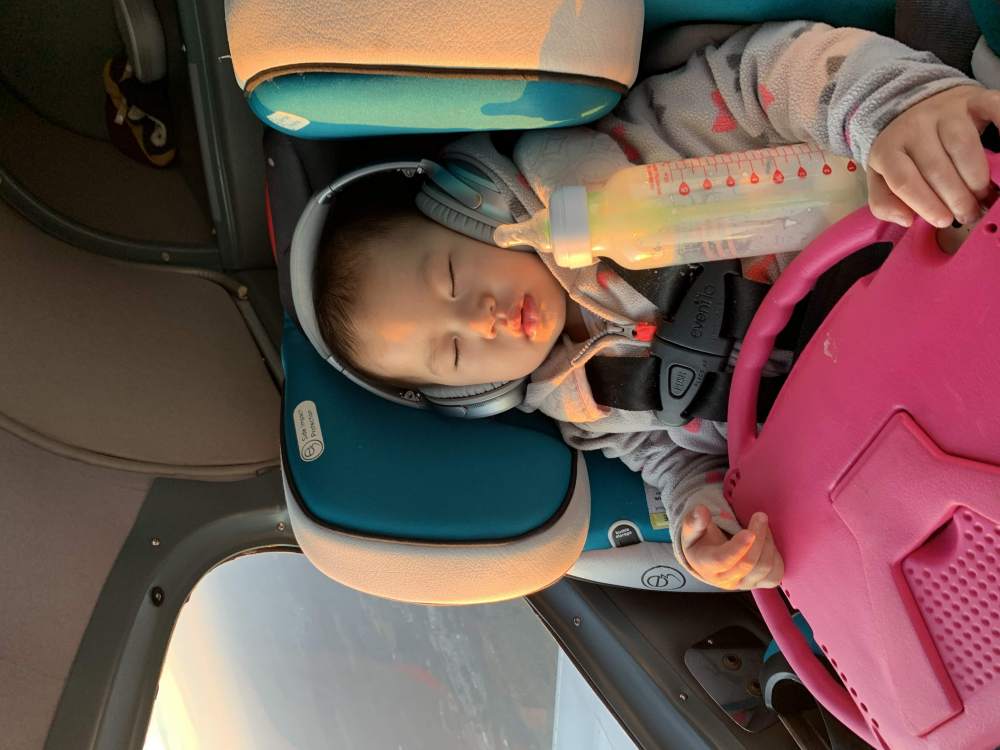


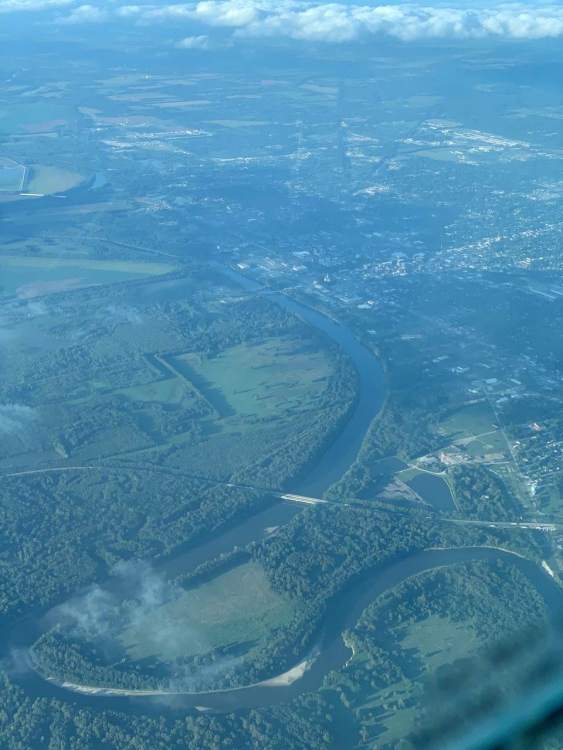
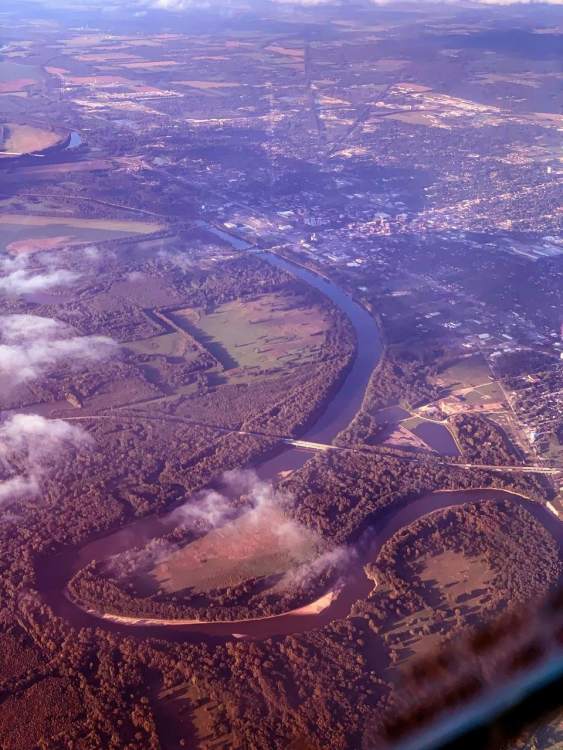
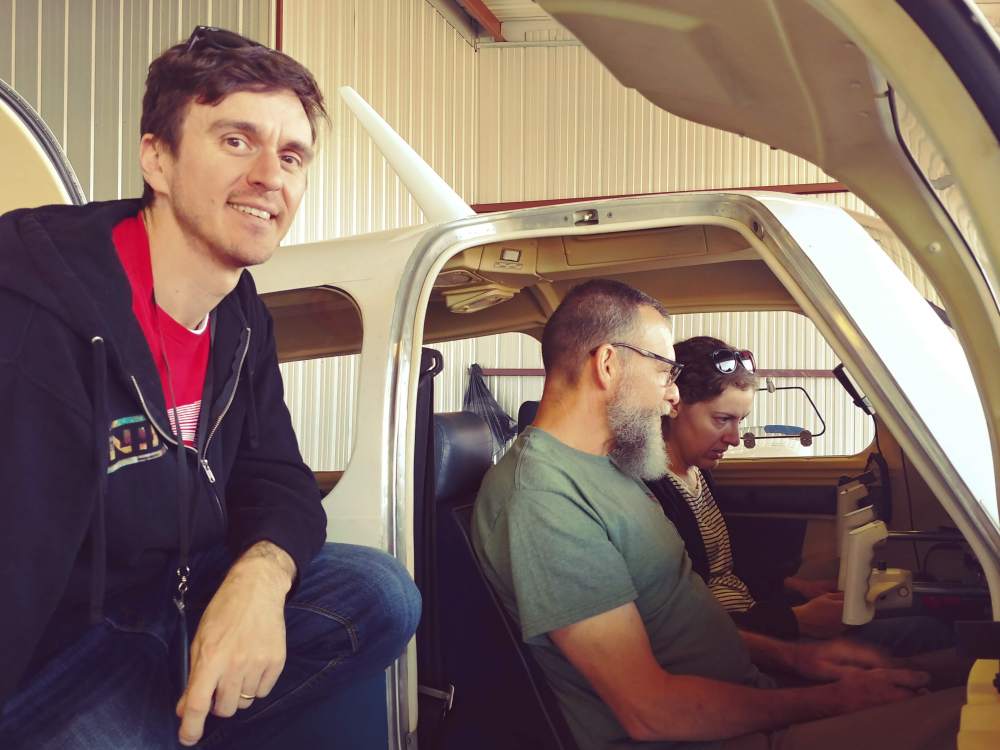

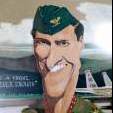



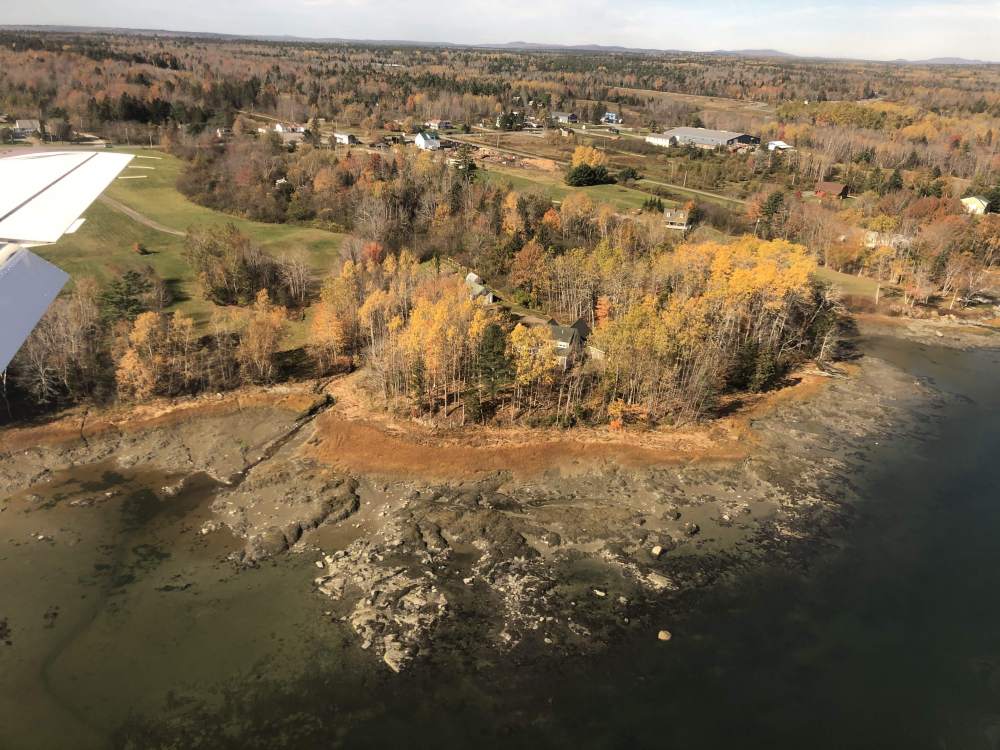
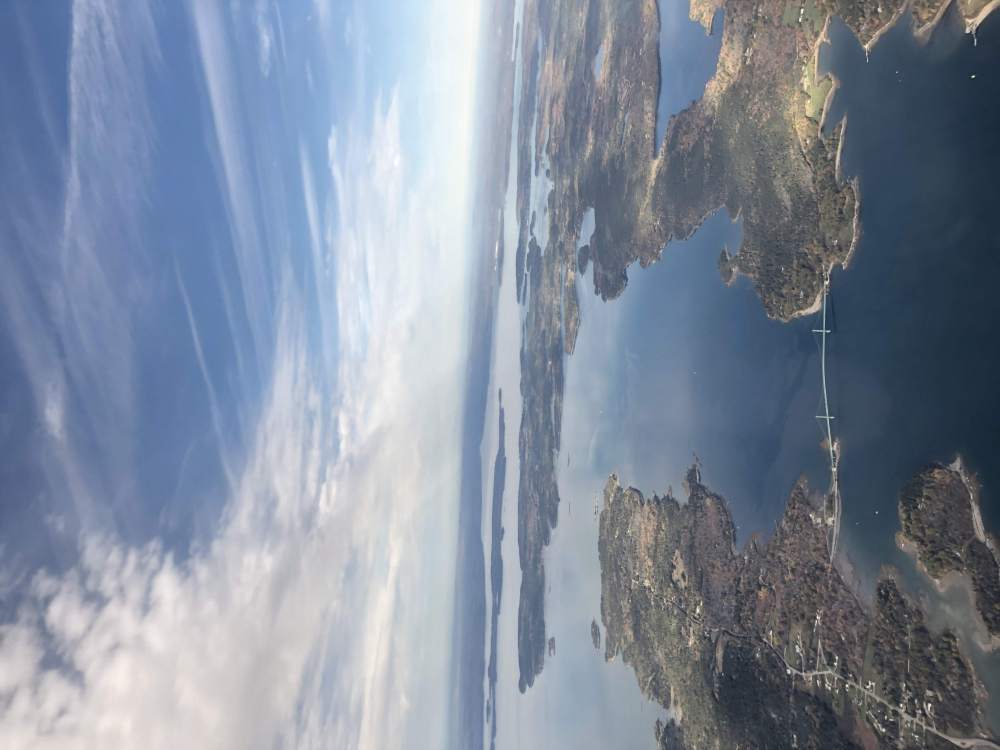
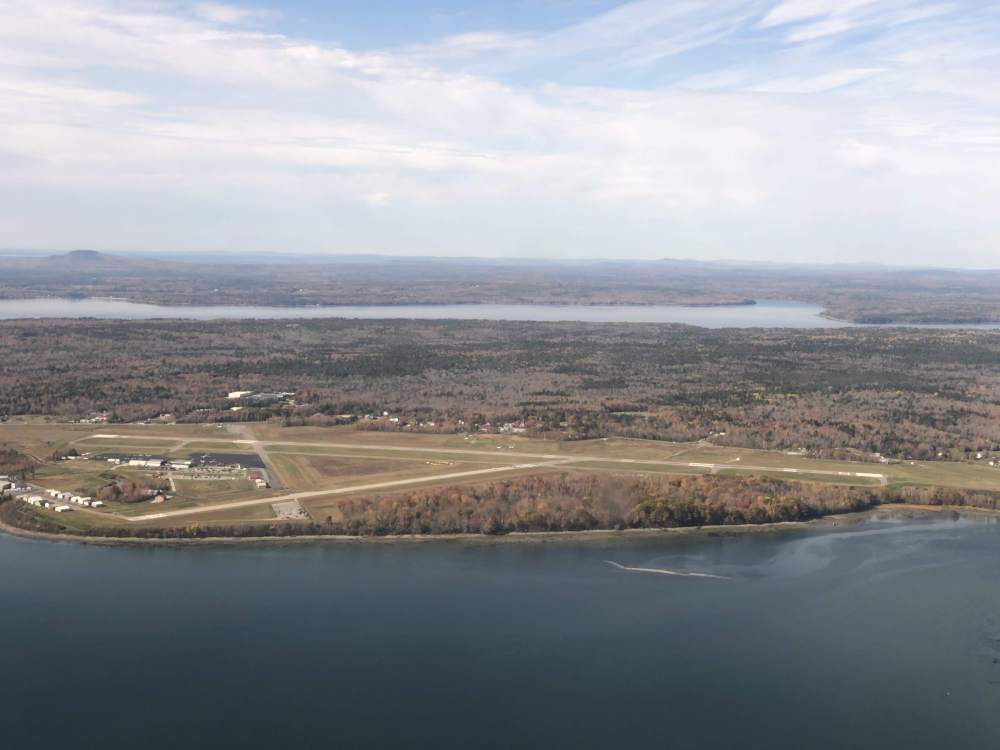

.thumb.png.7c67574d7b28f67b0b4a17760919b1ac.png)